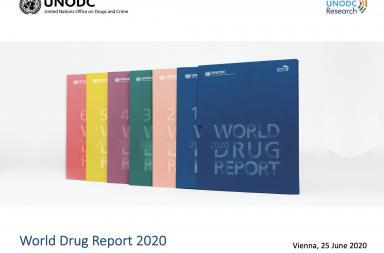This post is also available in:  Italiano (Italian)
Italiano (Italian)
Bolivia has initiated a WHO review of the current classification of the coca leaf as a narcotic drug under the 1961 Single Convention, creating an unprecedented opportunity to correct a grave historic injustice. Changing coca’s status in the UN drug treaties could vindicate the rights of Indigenous peoples and open legal international markets for natural coca products. It can generate licit livelihood opportunities for coca growers and contribute to peacebuilding in the Andean region, while bringing coca’s benefits to people around the world. The coca review process can also help modernize a drug treaty system that is still mired in the colonialist biases and racial prejudices from which it arose in the mid-twentieth century.
As Bolivian President Luis Arce explained in his formal notification to the UN Secretary-General, the coca leaf has “age-old traditional medicinal, nutritional and phytotherapeutic uses that cause neither dependence nor any harmful effect on health.” At the same time, he emphasized that Bolivia’s “intention is not to diminish in any way the international control of coca cultivation and of the use of coca leaves for the illicit production of cocaine.” Even if the coca leaf were to be deleted entirely from the schedules, the conventions contain specific articles that would still require Parties to take measures to prevent coca leaf from being used as a raw material in the illicit production of cocaine.
In the ‘Supporting Dossier’, Bolivia’s government details the severely flawed process that led to the decision to classify the coca leaf as a Schedule I drug, concluding that the “primary institutional responsibility for this historical error … lies with the WHO itself.” Embarrassing quotes from UN and U.S. officials at the time show the blatant racism that led to the judgment that the traditional practice of coca chewing had to be abolished within 25 years. That fateful choice condemned a millennia-old Andean-Amazonian culture and criminalized many thousands of coca farmers, traders and consumers.
Until now, the status of the coca leaf in the Single Convention has never been formally reconsidered. In 1992, the WHO Expert Committee simply concluded—without any new documentation—that the coca leaf was appropriately scheduled because “cocaine is readily extractable from the leaf.” The original rationale for designating coca as a narcotic drug itself in the first place, based on its supposed addictive and harmful properties, was not questioned in any way.
An extensive study in that same period, the “WHO/UNICRI Cocaine Project”, concluded in 1995 that the “traditional use of coca appears to have no negative health effects and that it serves positive therapeutic, sacred and social functions among indigenous groups in the Andean region”. It even recommended to investigate whether the beneficial effects of the coca leaf could be transferred from traditional contexts to other countries and cultures. Under U.S. pressure, however, the final report was shelved and never officially published by the WHO.
The WHO’s critical review is expected to be completed by the end of 2024, and—depending on its findings—may recommend changes in coca’s classification. The decision to adopt any recommended changes will then depend on a majority vote among the 53 Member States of the UN Commission on Narcotic Drugs (CND). The ideal outcome, in the Bolivian government’s view, would be to remove coca entirely from the schedules of the Single Convention. Any recommendation for changing coca’s current Schedule I status, however, is likely to face stiff political opposition in the CND. Active support from other countries and civil society will be needed to ensure this review turns out to be a step towards transforming a treaty system that appears frozen in time.
Read more on Coca Chronicle #1
[Illustration By Andela Janković]
![coca [Photo credit Corporación Viso Mutop]](https://www.fuoriluogo.it/wp-content/uploads/2020/03/coca-cultivation-384x253.jpg)


